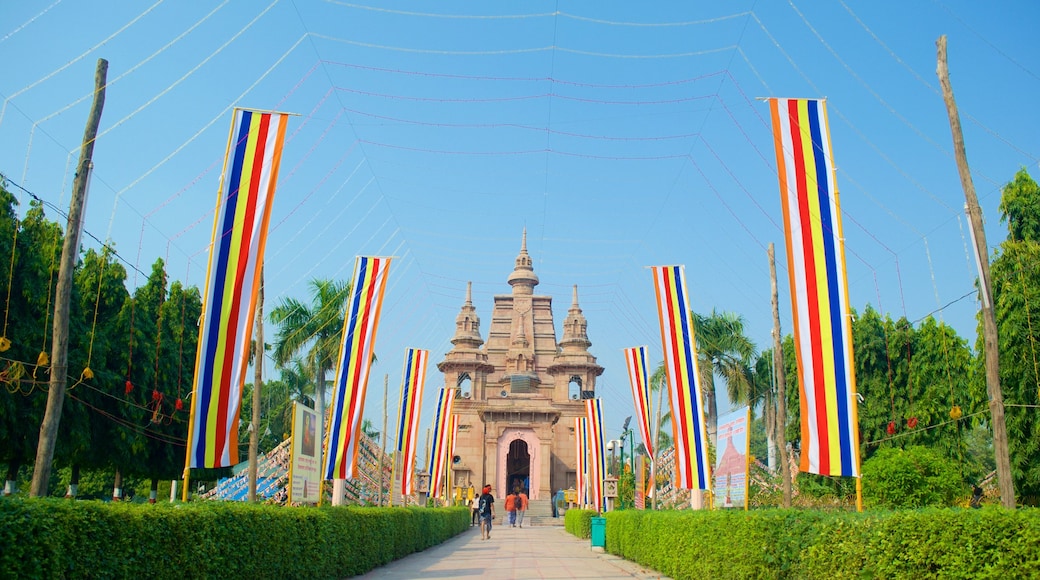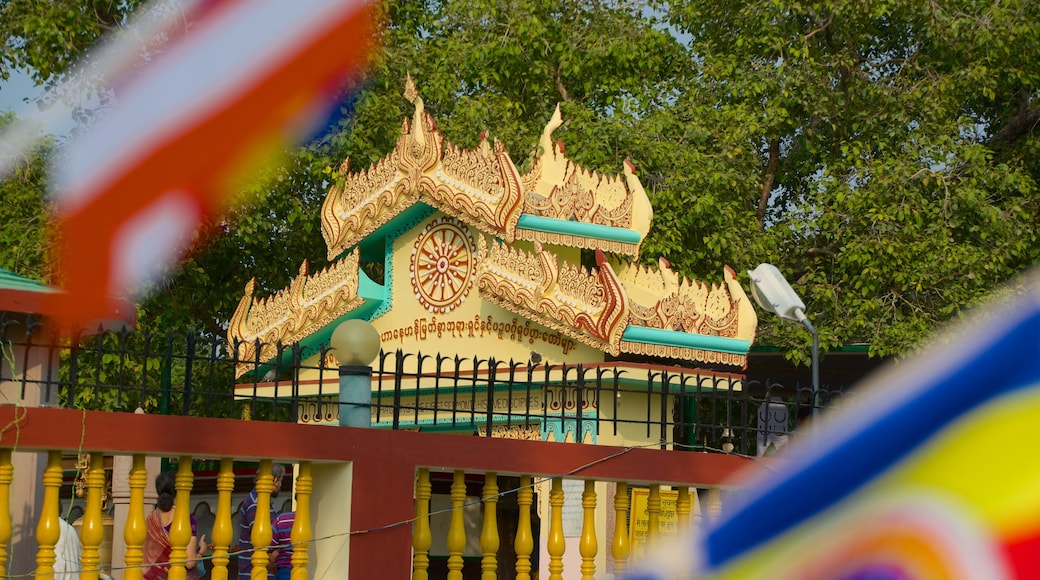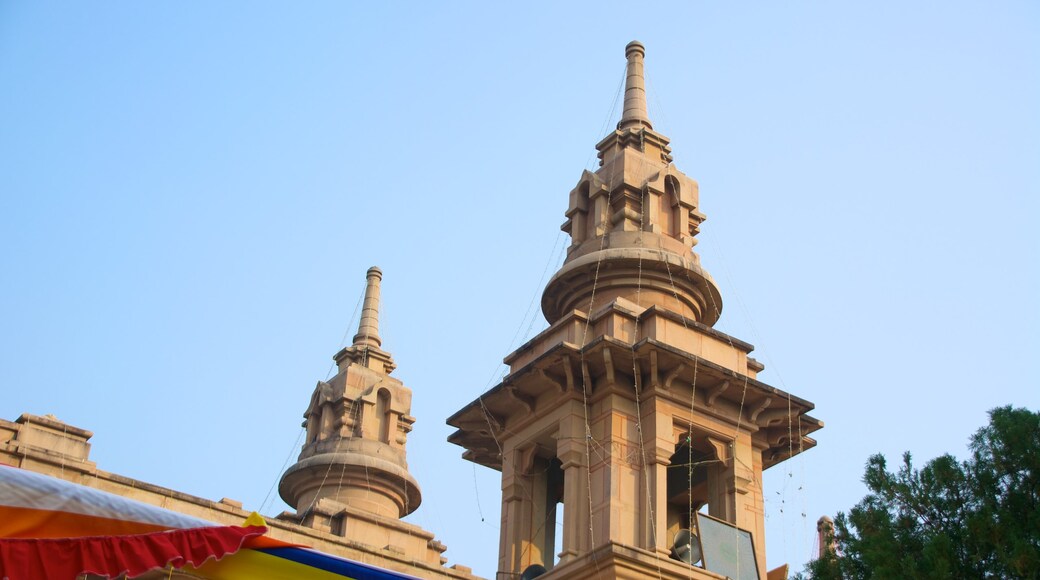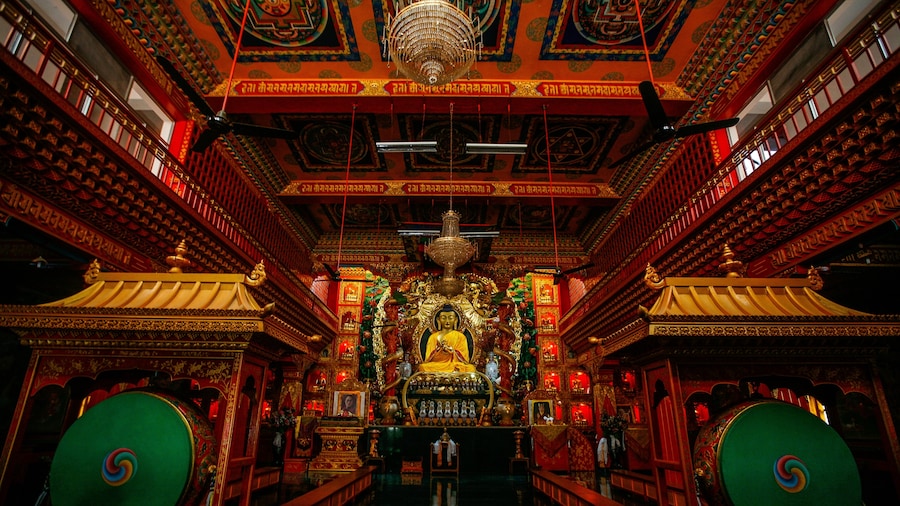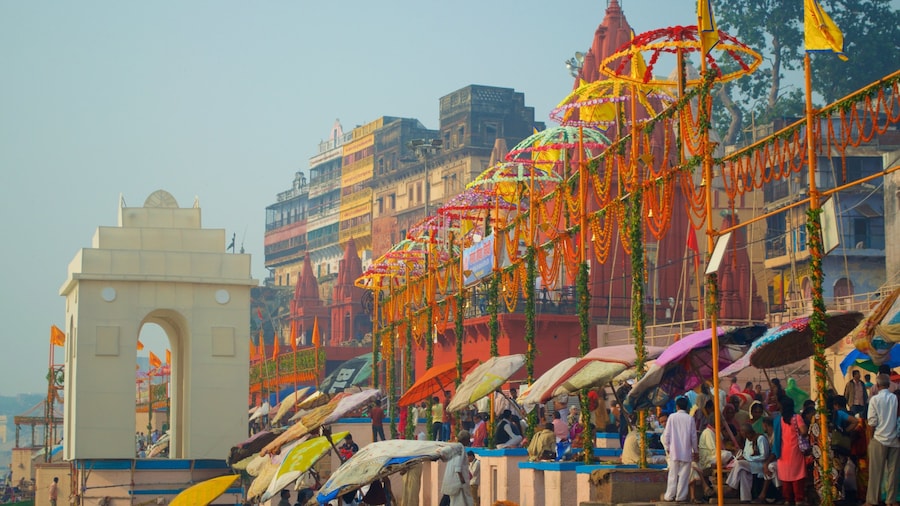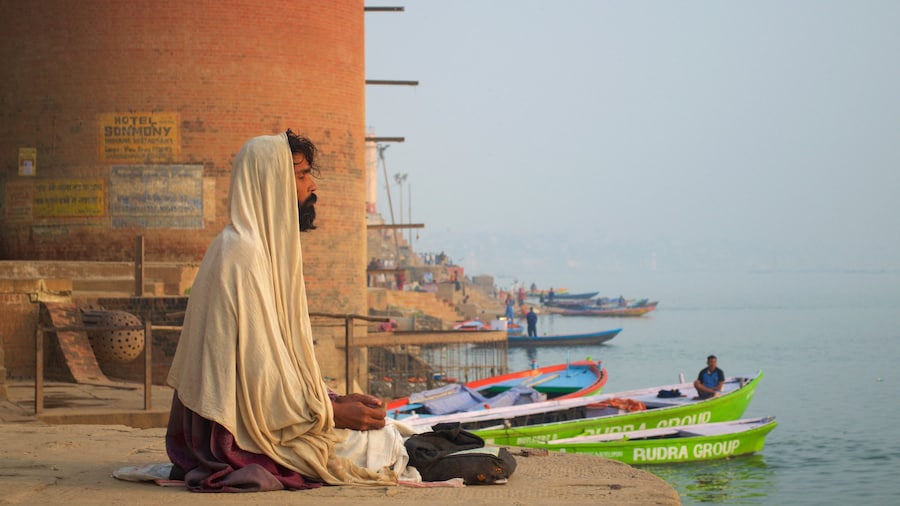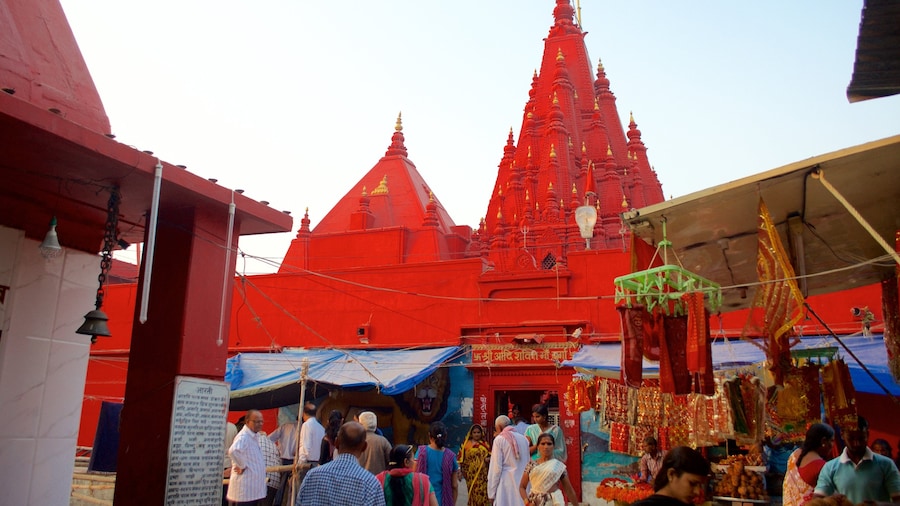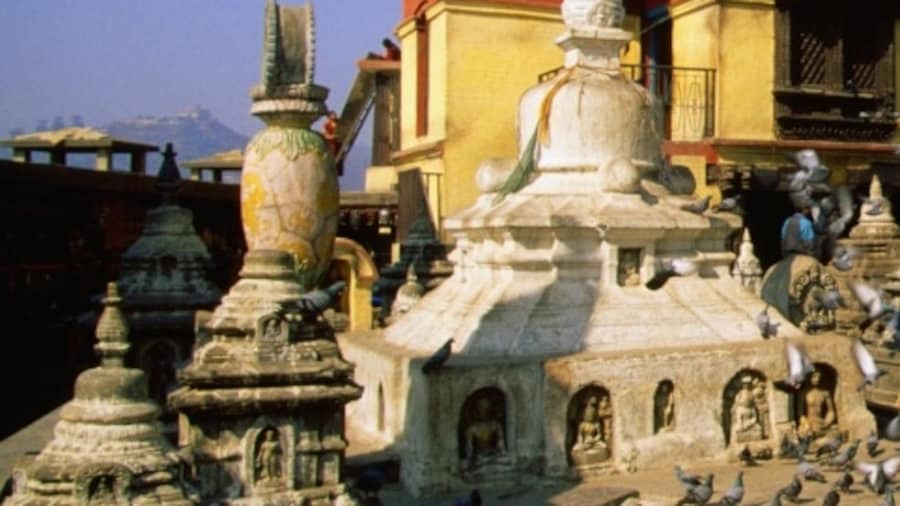Listen to monks chanting Buddhist sermons and spot interesting artwork at this modern temple, set among picturesque gardens, ruined temples and sacred shrines.
Mulagandha Kuti Vihara Monastery is a modern monastery and temple set among scenic gardens. Marvel at the striking Buddhist architecture, admire fascinating frescoes and listen to the infectious sounds of Buddhist chants. Mulagandha Kuti Vihara Monastery is in Sarnath, an ancient pilgrimage site that attracts Buddhist’s devotees from around the world. While here, visit the remains of revered temples, shrines and an interesting museum.
Approach the monastery via a paved walkway lined with multicolored Buddhist flags, which flap gently in the breeze. Gaze up at the attractive architecture, dominated by towers and intricately carved spires. Look for the Bodhi tree, which is supposedly a descendant of the tree beneath which Lord Buddha achieved enlightenment. Take a moment to watch the groups of monks that sit and meditate on the surrounding green lawns.
Step inside the monastery to discover a superb collection of colourful frescoes depicting the life and teachings of Lord Buddha. They are the work of famed Japanese artist Kosetsu Nosu. Come to the monastery in the evening to hear monks reciting Buddha’s first sermon, which legend states he gave at the nearby Damekh Stupa.
Located in the town of Sarnath, Mulagandha Kuti Vihara Monastery is about a 30-minute drive from Varanasi. Public buses travel between Sarnath and Varanasi. Alternatively, get here via tuk-tuk or taxi.
After visiting the monastery, check out the other attractions of Sarnath. Among these are the remains of the Dharmarajika Stupa from the 3rd century B.C., which once enshrined relics of Lord Buddha. Check out the ruined Chaukhandi Stupa, the meeting place of Buddha and his first disciples. Go to the Sarnath Museum to see Buddha icons, Hindu images and the Lion Capital of Ashoka, a sculpture of four lions.
The monastery and other attractions of Sarnath are open daily and have admission fees. The museum is open from Saturday to Thursday and charges a separate admission fee. Remember to remove shoes when entering the monastery and walk in a clockwise direction around the stupas. Signs in English provide useful information about the various monuments and ruins.
